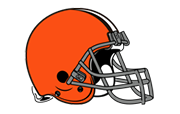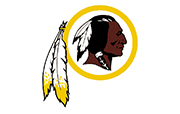It’s election day, and if you do nothing else, please remember to show up at the polls. Given that (hopefully) we’ll all be doing our civic duty today, it makes sense to begin by diving into the comparison between our electoral turnout and New York’s.
As you can tell from the chart below, more registered voters turned out in our last mayoral election. But before we start celebrating, we should acknowledge that the turnout numbers for both cities is way too low, 25.5 percent here to 23.8 percent in New York.
Interestingly, New York has more of a tendency to elect moderate Republican mayors than we do. I put the question to Professor Richardson Dilworth of Drexel’s Center for Public Policy: Why is that?
“A major concern for Philadelphia Democrats is that, even if they elected someone who was a Republican in name only, such as New Yorkers did when they elected Michael Bloomberg, that person would still be beholden to the statewide Republican party, and it would once again lead to a monolithic shift in parties—which would also make Pennsylvania a solid Republican state in presidential elections,” Dilworth says. “In other words, sophisticated Philadelphia voters may actually be thinking of national politics when they vote against Republicans, even in our off-year local elections. This was certainly an idea the local Democratic party pushed when they were faced with the challenge of Sam Katz against John Street in 1999 and 2003. By contrast, Democratic New York has always had a political machine independent of the state—and Republicans elected mayors in New York tend to be seen as city-specific reformers running against the city Democratic machine, not as part of a state Republican machine. So local voters in New York City are in some respects more free to vote for Republicans as a protest against their own party than are voters in Philadelphia.”
Beyond the voting data, the thing that New York really beats Philadelphia on—and on which it beats every single Northeastern and Midwestern city—is population growth. “Between 2010 and 2015, New York City is estimated to have added about 375,000 more people to its population,” says Dilworth. “It’s as though, over five years, the entire population of Pittsburgh moved to New York City.”
But New York City loses to Philly on one critical datapoint: It is absurdly expensive. In 2010-2014 median family income in New York City was 40 percent higher than in Philadelphia ($52,737 versus $37460), but median value of owner-occupied housing was more than 240 percent higher: $490,700 vs. $143,200.
New York Idea We Should Steal: Linking Sustainability to Economic Development
Recently, when Mayor Kenney announced the city’s new sustainability plan, he said something important: “Sustainability is about more than the environment; it is also about tackling issues such as economic opportunity, health and neighborhood equity.”
Mayor Kenney has taken a page from New York’s groundbreaking connection nearly a decade ago between environmental policy and economic growth. Philadelphia’s new plan, building on Mayor Nutter’s policies, includes making sure that all Philadelphians have access to healthy and affordable food and water, clean air and safe and low-carbon transportation, while benefiting from the city’s parks, trees and waterways.
New York is proof positive of the efficacy of holistic sustainability policy—and of how far Philly could take its plan. Mayor Bloomberg unveiled PlaNYC in 2007, after seeing projections of his city’s population growth. He realized his environmental goals had to be integrated into the city’s economic development agenda. PlaNYC launched some 127 initiatives within a year, containing objectives ranging from the number of breakwaters made from oysters to cubic feet of natural gas captured from sewage plants. In the program’s first four years, the city added 200 acres of parkland while improving existing parks; preserved more than 64,000 units of affordable housing, and reduced greenhouse gas emissions by 13 percent. No wonder The New York Times wrote of PlaNYC: “Its fate could determine whether [Bloomberg’s] administration will be remembered as truly transformative.”
Current New York Mayor Bill de Blasio has updated PlaNYC, changing its name to OneNYC and adding an emphasis on policies that can shrink the income gap. De Blasio has pledged to cut carbon emissions 80 percent by 2050, largely by increasing energy efficiency in buildings. And he has continued Bloomberg’s emphasis on using data to drive policy. As Bloomberg liked to say: “In God we trust. Everyone else, bring data.”
Happy election day. Next week, we take on Atlanta.
Connor Barwin is the Eagles defensive end and runs the Make The World Better foundation, which works to refurbish city parks.
Results

PhiladelphiaEagles |
|

New YorkGiants |
|
# of B Corporations
27 |
7 POINTS
Giants |
# of B Corporations
50 |
|
% Graduated high school in last school year
65 |
7 POINTS
Giants |
% Graduated high school in last school year
70.5 |
|
Diversity Index
0.34 |
7 POINTS
Giants |
Diversity Index
0.26 |
|
% Bike to work
1.9 |
7 POINTS
Eagles |
% Bike to work
1.1 |
|
% Acres of park space
13 |
7 POINTS
Giants |
% Acres of park space
20.8 |
|
Violent crime per 1,000 residents
10.2 |
7 POINTS
Giants |
Violent crime per 1,000 residents
6 |
|
% Voted in last mayoral election
25.5 |
7 POINTS
Eagles |
% Voted in last mayoral election
23.8 |
|
% Below poverty
26 |
7 POINTS
Giants |
% Below poverty
20.9 |
|
Public transportation score
67 |
7 POINTS
Giants |
Public transportation score
84 |
|
Final Score
14 |
New York
Giants |
Final Score
49 |
Sep. 11 |
63-0
Eagles |

Browns |
Sep. 19 |
28-35
Bears |

Bears |
Sep. 25 |
35-28
Eagles |

Steelers |
Oct. 09 |
63-0
Eagles |

Lions |
Oct. 16 |
28-35
Redskins |

Redskins |
Oct. 23 |
28-35
Vikings |

Vikings |
Oct. 30 |
35-28
Eagles |

Cowboys |
Nov. 06 |
14-49
Giants |

Giants |
Nov. 13 |
56-7
Eagles |
Falcons |
Nov. 20 |
35-28
Eagles |

Seahawks |
Nov. 28 |
35-28
Eagles |

Packers |
Dec. 04 |
35-28
Eagles |

Bengals |
Dec. 11 |
28-35
Redskins |

Redskins |
Dec. 18 |
49-14
Eagles |

Ravens |
Dec. 22 |
14-49
Giants |

Giants |
Civic Record:
EAGLES |
Wins
9 |
Losses
4 |
Upcoming Games:
For more information on this data, see the Civic Season Explained page.
Note: The Eagles play Washington, D.C., New York and Dallas twice this season, but we only count each city once in the Civic Record.


